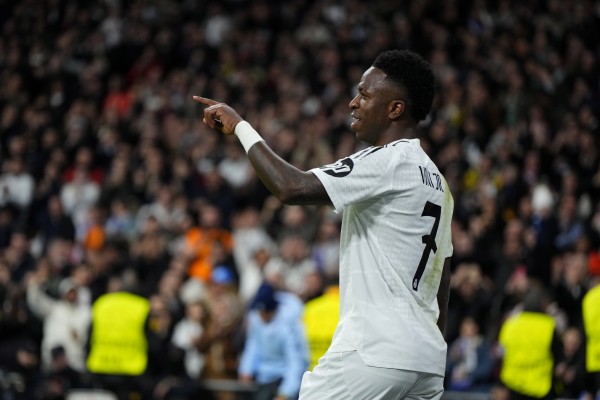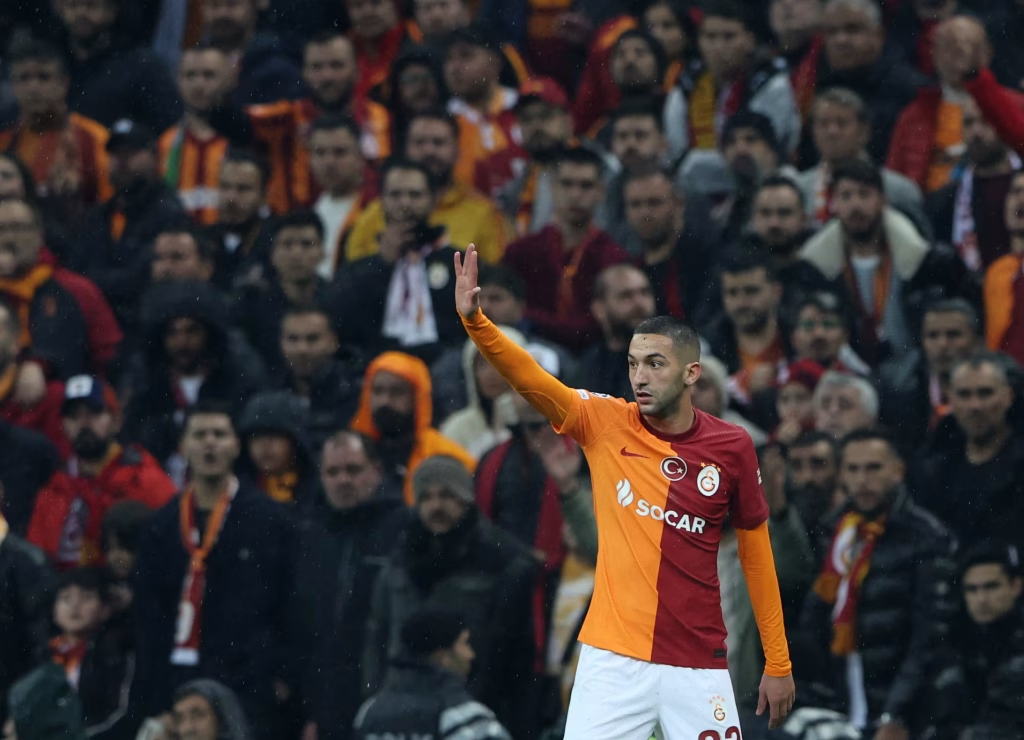
MANCHESTER, England (AP) — A bold new vision for the Champions League was introduced this season, offering more games and more revenue for Europe’s elite clubs, while also countering the threat of a controversial breakaway super league.
However, the revamped format was designed to be about more than just enriching the sport’s wealthiest teams. The goal was to bring more drama, competition, and entertainment to fans, addressing the perception that the old format had become predictable, with the same teams consistently progressing past the group stages.
The introduction of a 36-team league phase — replacing eight smaller groups of four — has delivered unexpected results and put some of Europe’s biggest clubs in danger of early elimination, with 2023 champions Manchester City among the notable casualties.
“It could happen,” said City manager Pep Guardiola, whose team currently sits in 25th place in the standings and faces possible elimination with just one game remaining. “If we don’t win, we won’t deserve it. We haven’t got enough points, and we’ll have to accept it.”
The New Format Keeps Things Exciting
UEFA’s decision to expand the competition to a 36-team league, driven by pressure from influential clubs, was promoted as ensuring that “every game counts.”
Heading into the final round of matches next week, the stakes are high. Paris Saint-Germain defeated City on Wednesday, but could still fail to reach the playoffs. Defending champions and record 15-time winners Real Madrid may also find themselves in a playoff, having flirted with elimination.
With Bayern Munich, Juventus, and last year’s finalists Borussia Dortmund also sitting in playoff spots, the prospect of top teams facing each other early in the knockout rounds could lead to some surprising exits.
As it stands, only Liverpool and Barcelona are guaranteed a place in the last 16, with the top eight teams advancing automatically, and the ninth to 24th place teams entering a two-legged playoff.
A Bold Twist Levels the Playing Field
Soccer league formats traditionally follow a simple structure where each team plays every other team twice — once at home and once away. UEFA has scrapped that in favor of a new schedule where each of the 36 teams faces eight different opponents.
In previous years, the highest-seeded teams usually breezed through their groups, but this time around the competition has been far less predictable.
The draw was based on four seeding pots, with the highest-ranked teams in pot one and the lowest in pot four. Teams were then drawn to play two opponents from each pot.
UEFA’s reasoning was that this would lead to more high-profile matchups earlier in the competition and also provide lower-ranked teams with a better chance to compete against teams of similar quality, leading to more opportunities for them to earn points.
These changes have led to a more even spread of results, giving lower-ranked teams a better chance to cause upsets. For example, PSG’s league phase included games against City, Bayern Munich, Arsenal, and Atletico Madrid.
“If I look at Paris Saint-Germain, every week I think they have the hardest team to face, so they are quite low in the table, which is not their quality, but they are low,” said Liverpool head coach Arne Slot.
More Drama on the Horizon
Slot described the new league phase as “strange” and “weird.” His team tops the standings with a perfect record, having beaten Real Madrid and German champions Bayer Leverkusen. However, he downplayed suggestions that Liverpool is currently the best team in Europe.
The unpredictable results so far mean Liverpool could still face a tough draw in the next round. If the standings stay the same after next week, Liverpool could be matched up against Madrid, Bayern, Juventus, or Celtic in the last 16 — hardly a reward for finishing top.
As Slot points out, “If you’re No. 1-seeded in tennis, you know it’s better to face the No. 24 seed than the No. 8 or No. 12, because rankings are based on years of performance. But now, in this new format, some teams are high because they had a favorable draw, while others are low because of a difficult one.”
Before that, though, the final round of group-stage matches promises to be an exciting conclusion, with many positions still undecided. The playoff round could feature the two most recent Champions League winners, as well as three winners from the past five years.
Surprises and Thrills
The season has already seen some major upsets. Lille stunned Madrid on matchday two, and Aston Villa shocked Bayern Munich. Manchester City was humbled by a 4-1 loss to Sporting Lisbon, and Guardiola’s team was further rattled when Feyenoord came back from 3-0 down to draw 3-3 at the Etihad Stadium.
In a repeat of last year’s final, Madrid came from 2-0 down to defeat Dortmund 5-2. Even more dramatic was Barcelona’s remarkable comeback against Benfica, recovering from 3-1 and 4-2 down to win 5-4 with goals in the 86th and 96th minutes.
The match between PSG and City was another thriller, with PSG winning 4-2 after City had led 2-0 early in the second half, pushing City to the brink of elimination.
Clubs wanted more head-to-head games with their biggest rivals, and the new format has certainly delivered plenty of excitement.
More Games, More Money, More Demands
However, the expanded Champions League format also raises concerns about player fatigue. The additional two games in the league phase come at a time when FIFA has also launched an expanded Club World Cup.
FIFPRO, the global players’ union, says many players are reaching breaking point, with some routinely playing 60-70 matches per season, far exceeding the union’s recommended limit of 55.
But with the new format comes an increase in prize money — at least a 25% rise to a minimum of 2.5 billion euros ($2.8 billion). The added home game in the first phase also means more ticket revenue.
Madrid coach Carlo Ancelotti acknowledged the downsides, saying, “We are playing two more matches, so that’s something negative. But it’s something new. And when something new happens, you have to evaluate it.”



